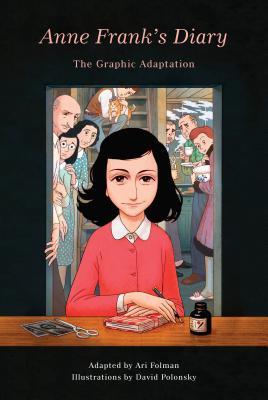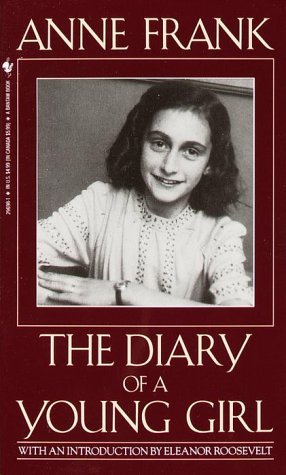I was younger than Anne Frank when I first read, was mesmerized by and devastated by “The Diary of a Young Girl.” And now I’m so much older than she.  Yet, if Anne Frank had survived Bergen-Belsen concentration camp and lived on, she’d have turned ninety, this June 14, 2019. Anne is our contemporary. In the 1952 version I first read, passages that her father had deemed unseemly, had been deleted. Those have been returned to the script in newer editions.
Yet, if Anne Frank had survived Bergen-Belsen concentration camp and lived on, she’d have turned ninety, this June 14, 2019. Anne is our contemporary. In the 1952 version I first read, passages that her father had deemed unseemly, had been deleted. Those have been returned to the script in newer editions.
The copyright to the original “Diary” expired in 2016 and now there is a remarkable new version, “Anne Frank’s Diary: The Graphic Adaptation” (Pantheon 2018) retold by Ari Folman and illustrated by David Polonsky. It’s not just a reiteration of the classic. The text and artwork take its readers to new places.
Anne tells her story in the first person, as by definition, a diary does. And the very nature of the visual images shows us Anne, her family members and the van Daans. Instead of Anne telling us that Jews are betrayed, there are frames outside the annex showing a gentile asking an SS officer ‘how much per Jew.’ The officer directs the traitor to an address where a man makes “15 guilders per head,” showing one way Jews were betrayed.
There are passages showing Anne’s fantasies as they get news from their intrepid patron, Miep, about the atrocities happening in German camps. We see Anne peeking through her window to see dirty children playing outside. She wants to reel them in with a fishing rod and scrub them clean, the artwork shows us.
We see Anne’s waking nightmare as rows of Jewish people, some carrying crying children, walk to their deaths in gas chambers.
Anne, as most teenagers do, seethes with rage. She feels wounded by her mother and the other attic occupants. “Everyone thinks I’m showing off when I talk, ridiculous when I’m silent, insolent when I answer, cunning when I have a good idea, lazy when I’m tired, selfish when I eat one more bite than I should, stupid, cowardly calculating . . .” She pretends she’s not bothered, but she’s raging.
Big sister Margot is in control of herself, seemingly docile. It makes you wonder what Margot would say. We’ll never know. She died of typhus alongside Anne in the camp in 1945, shortly before the camps were liberated.
 Mr. Dussel, who arrives to the attic annex months after the others, receives goodies from his Christian wife who lives ‘outside.’ Despite the Frank family saving him, he doesn’t share.
Mr. Dussel, who arrives to the attic annex months after the others, receives goodies from his Christian wife who lives ‘outside.’ Despite the Frank family saving him, he doesn’t share.
These poor trapped crowded beings, struggle with each other’s shortcomings, but together, they feel despair. They are entrapped for two years. As time progresses, guns pop all night. Bombs destroy landmark buildings. Sometimes sirens wail through the nights.
Anne is given valerian tea, an herbal tranquilizer, to sleep. She’s depressed. Of course. And then a break-in of petty criminals in the warehouse below changes everything.
The diary wasn’t just Anne’s personal coping tool, as I’d thought. There had been an announcement that personal accounts of wartime would be published after the war. She dreams of being an author. And what an author she is!
Patricia Hruby Powell is the author of the award winning Josephine; Loving vs Virginia; and Struttin’ With Some Barbecue among others talesforallages.com

Leave a Reply